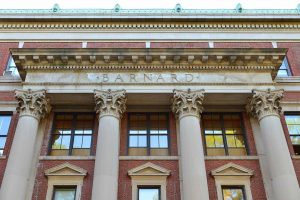By Dean Joannou, Staff Writer
The United States has seen a 6.8 percent rise in inflation for the month of November. This continues a trend that has occurred as the economy has opened up after an unprecedented shutdown brought on by COVID-19. As inflation has been a major point of conversation recently, and economics professor Dr. Udayan Roy has a lot to say on what has caused this recent spike.
“[Inflation is generally caused when] the central bank of the country prints currency at a faster rate than the increase of its productive capacity,” Roy said.
At the root of this period of increased inflation is the stimulus that was given to American citizens in an effort to provide aid during the pandemic. With money coming in and fewer ways to spend it in a mostly closed economy, Americans began to save and reached a higher amount of savings than they previously had.
“As the economy started reopening, the opportunities to spend rose and all of that saved up money started getting spent. That increased demand led to inflation,” Roy said.
While Roy identifies this as a cause of the inflation, he feels the stimulus was still necessary and that doing nothing to help people during the uncertain times of the pandemic would have been a worse option. Another contributing factor to inflation has been an increase in the price of goods owed to the unique circumstances that COVID-19 has brought.
“People could not spend on travel, or entertainment like going to the theater. Most of the spending has been on goods like exercise machines and cars,” Roy said. He adds that the disproportionate increase in demand for goods rather than services led to problems with the supply chain, as the shipping industry became overwhelmed.
“Many businesses scaled back their productive capacities because they thought the lockdown would last for a long time. The economy opened faster than most anticipated,” Roy said, further explaining the cause of the rise of goods which has contributed to inflation.
As for a solution, one option is for the Federal Reserve to take direct action. “The central bank can reduce inflation by raising interest rates, because if interest rates rise then it’s harder for people to borrow money to buy a car or to buy a house or something like that or for businesses to borrow money to expand,” Roy said.





Be First to Comment